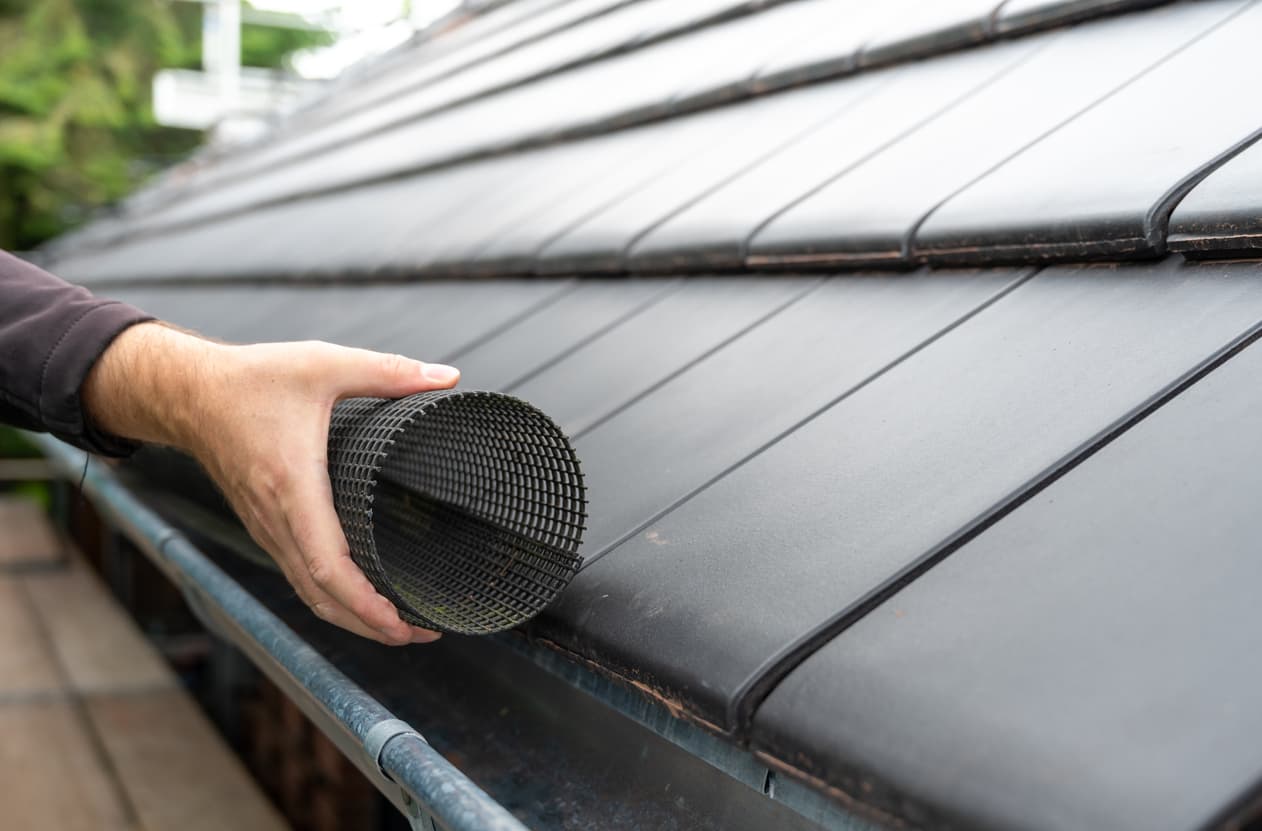How to Fix Blocked Gutters
Fixing blocked gutters is very important as they can cause major damage to your home if not attended to. Damage can range from dampness and leaks to even structural issues, as water over time can have an eroding effect on materials used in building construction.
The Causes of Blocked Gutters
Blocked gutters can lead to various issues, so it's important to understand the main causes. Here are some of the primary reasons for blocked gutters we see in Liverpool and the North West:
Leaves and Debris
The most common cause of blocked gutters we see is the accumulation of leaves, twigs, and other debris during Autumn.
If you live near trees or have large trees in the garden, the leaves are easily blown onto your roof. From here, the wind and rain help these leaves find their way into your guttering, and when wet, they become hard to dislodge.
They can create a mini dam along your guttering and also block up your downpipe or drop outlet.

Overhanging Branches
Tree branches hanging over or near the roof can drop leaves and twigs into the gutters, causing blockages. Trimming these branches can help prevent this issue somewhat depending on if your tree is deciduous, may still experience laves blowing onto the roof in Autumn.
Dirt and Dust:
Over time, dirt, dust, and small particles can build up in the gutters, creating a blockage. This can happen in any season and may require regular cleaning.
We see this type of blockage regularly on new housing estates or in areas that have a lot of construction work nearby.
Bird Nests
Birds may build nests in gutters, especially in the spring. These nests can obstruct the flow of water and contribute to blockages.
Sometimes, a nest is built on a nook or cranny, and as the nest builds, it interferes with the guttering, causing blockages.
Moss and Algae
In damp conditions, moss and algae can grow in gutters. These organisms can trap debris and prevent proper drainage. If your drains are not cleaned periodically, you will be more susceptible to moss and algae build up.

Silt and Sediment
Over time, silt and sediment from your roof can wash into the gutters, creating a sludgy mixture that can block the flow of water. If you live by the coast in areas such as Crosby or West Kirkby your gutters will be more at risk of sediment buildup over time.
Improper Installation
Gutters that are not properly installed or pitched at the correct angle may not allow water to drain effectively, leading to blockages.
Sometimes drains are also knocked or have been impacted, which causes the drain system to shift from the correct position and this can aid blockages and leaks.
Downspout Issues
Clogged or improperly installed downspouts can prevent water from draining from the gutters efficiently, causing blockages to form.
Frozen Debris
In the winter, snow and ice can accumulate in gutters. As this melts and refreezes, it can trap debris and create blockages in your guttering.
Nesting Pests
In addition to birds, rodents and insects can make nests in your gutters, contributing to blockages. Regular inspection can help detect and address this issue.
How to Fix Your Blocked Gutter
To prevent blocked gutters, regular maintenance and cleaning are essential. It's a good practice to inspect your gutters periodically and clean them as needed, especially during seasons when debris tends to accumulate.
Fixing a blocked gutter is a task that requires a bit of time and effort but is essential to prevent potential damage to your home. If you are attempting to unblock your gutter without professional help, please follow these steps.
Step 1: Safety First
Before you start, ensure your safety. Wear appropriate clothing, such as gloves and safety goggles, to protect yourself from debris and dirt that may fall from the gutter. If your gutter is high up, use a stable ladder on a flat surface and have someone hold it for added safety.
Step 2: Gather Your Tools
Collect the necessary tools and equipment. You'll need a sturdy ladder, a garden trowel or scoop, a bucket or bag for collecting debris, a hose with a high-pressure nozzle attachment, and a pair of work gloves.
Step 3: Position the Ladder
Position the ladder securely near the blocked section of the gutter, ensuring it's stable and at the right angle to reach the gutter comfortably.
Step 4: Remove Surface Debris
Start by using the garden trowel or scoop to remove any surface debris, such as leaves, twigs, and dirt. Carefully scoop this material into your bucket or bag. Work your way along the gutter, moving the ladder as needed.

Step 5: Check for Downspout Blockage
Inspect the downspout to ensure it's not blocked. If water isn't flowing freely, it may indicate a clog further down the system. You may need to use a plumber's snake or a high-pressure hose to clear the downspout.
Step 6: Rinse and Flush
With the surface debris removed, use the hose with a high-pressure nozzle attachment to rinse the gutter thoroughly. Start at the end opposite the downspout and work your way towards it. The force of the water should dislodge and wash away any remaining debris.
Step 7: Final Inspection
After flushing the gutter, take a final look to ensure it's clear of any blockages. Also, check for any damage or loose gutter components that may need repair.
Step 8: Downspout Flow Test
Once the gutter is clear, check the downspout again to ensure water flows freely. If there are still issues, use a plumber's snake or a hose to clear any remaining blockages in the downspout.
Step 9: Preventative Measures
Consider installing gutter guards or screens to help prevent future blockages caused by debris. Regularly inspect and clean your gutters at least once or twice a year, especially during the fall when leaves are prone to accumulate.

Step 10: Maintenance
Keep an eye on your gutters throughout the year and address any issues promptly. Proper maintenance can help prolong the life of your gutter system and prevent costly repairs down the road.
By following these steps, you can effectively fix a blocked gutter and ensure that rainwater is directed away from your home, protecting it from potential water damage.
Proper gutter installation and regular upkeep can save you a lot of money.
We often see people leaving their gutters alone until they have an issue. Best practice would be to ensure they are checked periodically and stop any potential problems before they start.
If you need one of our drainage engineers to come to your home and check your guttering and remove any blockages, please contact us on 0151 668 0833.

 Call Now
Call Now Get A Quote
Get A Quote-1.png)
-2.png)
-3.png)
-4.png)
-5.png)
-6.png)
-7.png)




Comments
No Comments